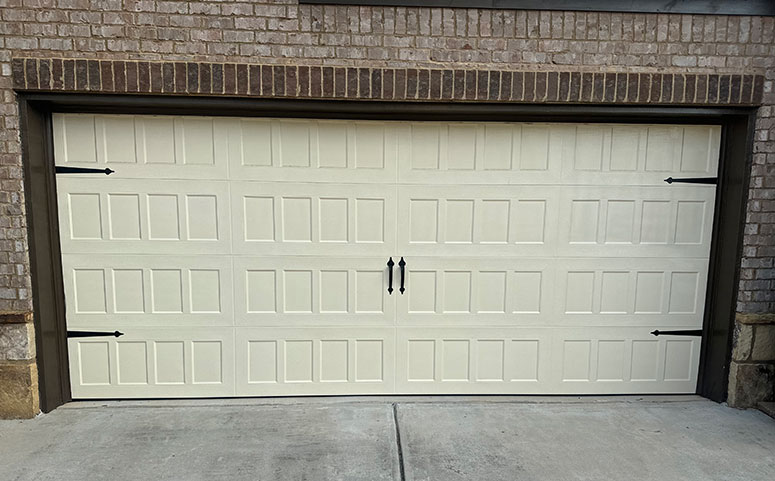Trusted Garage Door Repair for Enduring Results
Trusted Garage Door Repair for Enduring Results
Blog Article
Typical Garage Door Troubles and Just How to Fix Them
Garage doors are crucial for both safety and convenience, yet they often provide a variety of common problems that can discourage homeowners. Problems such as extreme sound throughout operation, doors that fall short to open up or close, misaligned tracks, and malfunctioning remotes can emerge without warning. While some problems may appear simple to fix, others may call for a more nuanced understanding of garage door mechanics. Attending to these problems effectively not only enhances capability however additionally extends the life of the door. One might wonder what steps are essential to deal with these obstacles successfully.
Noisy Garage Door Procedure
A noisy garage door procedure can be a considerable source of aggravation for property owners, typically indicating underlying mechanical problems. Such interruptions may stem from different causes, including damaged rollers, loose equipment, or inadequate lubrication. Determining the resource of the sound is important for effective resolution.
Over time, these elements can wear away, leading to grinding or squeaking audios as the door moves. Furthermore, loosened bolts or screws in the door mechanism can produce rattling audios throughout procedure.
Another contributing factor is inadequate lubrication of the door's moving components. Applying a top quality lube to the tracks, springs, and rollers can substantially diminish rubbing and sound. Homeowners need to execute this upkeep regularly to maintain optimum efficiency.
Finally, the garage door opener may also produce noise as a result of its age or mechanical issues. If the noise continues regardless of dealing with various other factors, consulting a professional for a thorough evaluation and prospective repair service may be necessary.
Door Will Not Open or Close
Experiencing a garage door that will not open up or shut can be extremely frustrating and frequently indicates a breakdown within the system. Several factors can contribute to this problem, and recognizing the origin is crucial for efficient resolution.

Following, evaluate the safety sensing units located at the base of the door. These sensors can become misaligned or blocked by debris, avoiding the door from operating correctly. Clean the sensors with a soft fabric and ensure they are aligned.
Furthermore, the garage door's inner elements must be reviewed. Problems such as a damaged spring, damaged rollers, or a harmed opener can impede movement. If any components seem damaged, it may be a good idea to speak with an expert for fixings.
Misaligned Tracks
(High-Quality Standards)Misaligned tracks can badly disrupt the smooth procedure of a garage door, leading to operational failings such as uneven activity or total immobilization. This concern typically arises as a result of a variety of elements, including wear and tear, accidental impacts, or incorrect installation. When the tracks are misaligned, the rollers can not move openly, which not just stresses the electric motor however also poses safety risks.
If you see any type of disparities, it is vital to deal with the issue without delay. Very carefully touch the track back into its appropriate placement utilizing a rubber club or a similar device, guaranteeing it is straight and degree.
Regular maintenance, including cleaning the tracks and making sure rollers are in excellent problem, can stop future misalignments. By dealing with misaligned tracks immediately, you can recover the functionality of your garage door and improve its long life.
Broken Springs
Amongst the various components of a garage door system, busted springtimes are just one of one of the most common concerns that can significantly impede its functionality. Garage door springs are vital for balancing the weight of the door, permitting smooth opening and closing. When a spring breaks, it can result in a door that is challenging to run or, in many cases, entirely unusable.
There are 2 main sorts of springs: torsion springtimes, which are mounted over the door, and extension springtimes, found on either side. Signs of a damaged spring include their explanation a door that will not open, a noticeable gap in the springtime, or a loud noise throughout operation. Trying to run a garage door with a busted springtime can create more damages to the door or the opener.
Repairing broken springs is not a do it yourself job; it requires specialized devices and knowledge due to the high stress involved. It is a good idea to seek advice from an expert specialist that can safely change the springtimes and guarantee the door is properly balanced. Normal upkeep and assessments can assist stop spring failings and prolong the life expectancy of the garage door system.
Remote Control Issues

If the remote still fails to run, check the garage door opener to make sure that its sensors are clean and unhampered. Dirt, debris, or imbalance may hinder the signal transmission between the remote and the opener.
Interference from various other electronic gadgets can additionally hamper remote functionality. Ensure that neighboring tools, such as wireless routers or cordless phones, are not creating interruptions. garage door service. If interference is believed, attempt relocating these gadgets even more far from the garage door opener
Sometimes, the remote might require to be reprogrammed. Speak with the manufacturer's standards to reset the remote control and synchronize it with the garage door opener. If all else falls short and the remote proceeds to malfunction, consider getting in touch with a professional technician for a thorough assessment and potential substitute of the remote or opener.
Final Thought
(Premium Service)In summary, common garage door problems can considerably affect functionality and security. Positive maintenance and timely repairs can make sure optimal performance and long life of garage doors.
Report this page